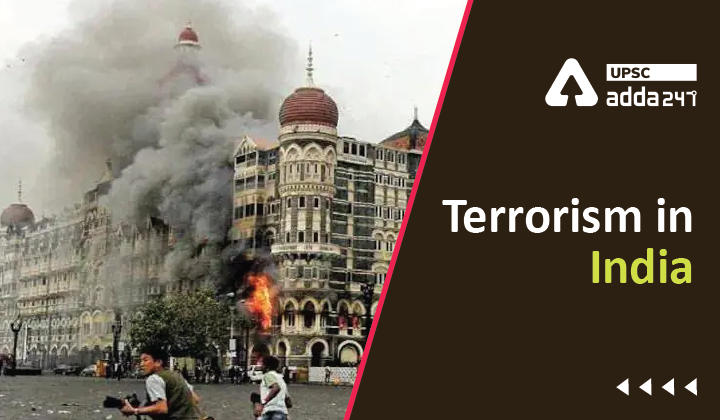Table of Contents
Terrorism in India UPSC
In our previous article, we discussed about terrorism meaning and the different types of terrorism. In this article, we will discuss about impact of terrorism and the various measures adopted by India to counter terrorism.
Terrorism in India
- Terrorism in India is characterized by communist, Islamists and separatist
- In India, communist terrorist groups are the most frequent perpetrators and the main cause of terrorism deaths in India.
- According to Global Terrorism Index, in 2015, deaths from terrorism in India decreased to the second lowest level since 2000.
- However, there were four per cent more attacks, totaling 800 and representing the highest number since 2000.
- In India, terrorism fostered in regions like Jammu and Kashmir, Punjab, North-eastern states and regions affected with left-wing extremism.
Impact of terrorism
Political impact
- Terrorism aims to create terror, a feeling of insecurity, and the idea that sovereign leaders can no longer protect those they lead.
- These political implications relate first and foremost to democracy and the separation of powers, and can lead to the discontent and abuse of existing structures.
Cultural impact
- If the impact of terrorism is lasting, it becomes cultural and individuals change their habits and behaviours.
- They learn not to be passive in the event of a terrorist attack, and live in a mental agony that a terrorist attack could take place.
- They also consume differently, which has a number of effects, including considerable economic ones. Terrorism changes people’s understanding of reality.
Economic impact
- Direct destruction: The most immediate and measurable impact of terrorism is physical destruction. Terrorists destroy existing plants, machines, transportation systems and other economic resources. On smaller scales, acts of terrorism may blow up different public places, markets or religious places.
- Increased market uncertainty: Markets hate uncertainty, and terrorist attack create a lot of it. The real threat of global terrorism from an investor’s perspective is about the broader picture, not individual incidents. International investment and cooperation are lower in a world full of terrorism.
- Insurance, Trade, Tourism, and FDI: There are two obvious industries especially vulnerable to the effects of terrorism: insurance and tourism. On a broader scale, terrorism hurts international trade.
Measures to counter terrorism in India
At international level
- At international level, India has proposed Comprehensive Convention on International Terrorism (CCIT) at United Nations General Assembly which is under negotiation.
- Upon its adoption, the convention would provide legal basis for criminalizing all terrorist activities.
- India has also voted in favour of Resolution 34/8 of the Human Rights Council on ‘Effects of terrorism on the enjoyment of all human rights’.
At national level
- Legal framework: India has various enactments for dealing with terrorism
- Unlawful Activities (Prevention) Act, 1967 {as amended by the Unlawful Activities (Prevention) Amendment Act, 2004}and
- the National Security Act, 1980
- Welfare schemes: A Central Scheme titled Central Scheme for Assistance to Civilian Victims of Terrorist/ Communal/Left Wing Extremist (LWE), Cross Border Firing and Mine/IED blasts on Indian Territory has been formulated. The broad aim of the Scheme is to assist families of victims of Terrorist, Communal and Naxal violence.
- Other initiatives include Welfare Scheme under which one seat each in the medical colleges is kept reserved for the kin of the victims from terrorism.
- Recently in the State of Assam, an initiative called ‘Project Ashwas’ has been initiated. It provides financial assistance for the children of victims of terrorism to pursue their education in higher educational institute.
- Institutional measures: The Ministry of Home Affairs includes the Intelligence Bureau, Central Reserve Police Force, Indian Police Service, and new National Investigation Agency, while the Research and Analysis Wing and Central Bureau of Investigation are answerable to the prime minister.
- Besides NATGRID (National Intelligence Grid), the military also generates intelligence with relevance to domestic terrorism, and there is a centrally controlled National Security Guard (NSG) that specializes in hostage and terrorist attack situations.
Read about UPSC favorite topics





 TSPSC Group 1 Question Paper 2024, Downl...
TSPSC Group 1 Question Paper 2024, Downl...
 TSPSC Group 1 Answer key 2024 Out, Downl...
TSPSC Group 1 Answer key 2024 Out, Downl...
 UPSC Prelims 2024 Question Paper, Downlo...
UPSC Prelims 2024 Question Paper, Downlo...




